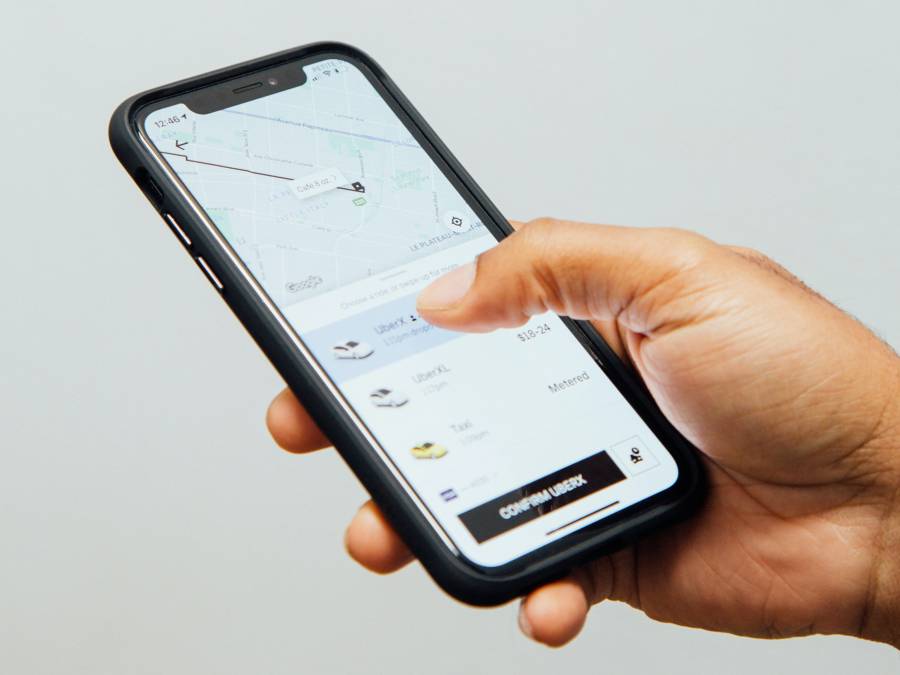Uber has revolutionized the way we travel in urban areas, making it more convenient and accessible for millions of people around the world.
However, when it comes to rural areas, Uber’s presence is limited and often faces unique challenges that prevent it from providing the same level of service as in cities.

In this article, we will discuss the challenges Uber faces in rural areas and explore potential solutions to improve its service.
Contents
- 1 Challenges Faced by Uber in Rural Areas
- 2 Solutions for Improved Service in Rural Areas: Advice for Uber Drivers
- 2.1 1. Collaborate with local transportation providers
- 2.2 2. Utilize ride pooling and scheduling strategies
- 2.3 3. Engage with local governments and regulators
- 2.4 4. Leverage technology to improve efficiency
- 2.5 5. Offer personalized and community-focused services
- 2.6 6. Build relationships with local community organizations
- 2.7 7. Promote rideshare etiquette and safety education
- 2.8 8. Invest in marketing and networking efforts
- 3 Conclusion
Challenges Faced by Uber in Rural Areas
1. Lower demand for rides
One of the main reasons why Uber struggles in rural areas is the lower demand for rides.
Urban areas have a higher population density and a greater number of people who rely on public transportation or ride-hailing services to get around. This creates a steady flow of riders, making it easier for Uber to maintain a presence in cities.
In contrast, rural areas have a smaller population, and people are more likely to own cars and drive themselves.
As a result, the demand for Uber rides is significantly lower, making it harder for the company to justify expanding its operations into these regions.
2. Longer distances between destinations
Rural areas are characterized by vast open spaces and longer distances between destinations. This poses a challenge for Uber drivers, as they often have to travel long distances to pick up passengers, which can be time-consuming and costly in terms of fuel.
As a result, drivers may be less inclined to work in rural areas, leading to a shortage of available drivers and longer wait times for passengers.
3. Lack of reliable internet connectivity
In some rural areas, internet connectivity can be unreliable or even non-existent. This poses a significant challenge for Uber, as both drivers and passengers rely on smartphones and internet access to request and accept rides.
Without a stable internet connection, it becomes difficult for Uber to operate efficiently in these regions.
4. Regulatory barriers
In some cases, local regulations and licensing requirements can make it difficult for Uber to expand into rural areas.
For example, certain regions may have strict rules regarding commercial vehicles or require specific licenses for drivers to operate legally.
These regulatory barriers can make it more challenging for Uber to establish a presence in rural communities.
5. Limited access to charging infrastructure for electric vehicles
As Uber moves towards adopting electric vehicles (EVs) to reduce its environmental impact, the lack of charging infrastructure in rural areas could pose additional challenges.

Drivers may be hesitant to switch to EVs if they cannot easily recharge their vehicles, limiting the potential for Uber’s green initiatives in rural regions.
Solutions for Improved Service in Rural Areas: Advice for Uber Drivers
While Uber has revolutionized urban transportation, its presence in rural areas remains limited due to various challenges.
However, drivers can play a significant role in improving Uber’s service in rural regions by adopting innovative strategies and working closely with local communities.
In this section, we will discuss potential solutions that Uber drivers can implement to better serve rural customers.
1. Collaborate with local transportation providers
Uber drivers can partner with local transportation providers such as taxi companies or shuttle services to overcome the challenges associated with lower demand and longer distances in rural areas.
By collaborating with these existing providers, drivers can benefit from their local knowledge and infrastructure, making it easier to serve rural customers while also expanding their own client base.
2. Utilize ride pooling and scheduling strategies
We can develop a rideshare model specifically designed for rural areas, which could include features like ride pooling, where multiple passengers traveling to similar destinations share a single vehicle.
This reduces the overall cost for passengers and increases efficiency for drivers. Additionally, drivers can schedule rides in advance, allowing them to optimize their routes and consolidate trips to make the most out of each drive.
3. Engage with local governments and regulators
Drivers should actively engage with local governments and regulators to better understand the unique requirements of each region and work together to find mutually beneficial solutions.
This could include advocating for changes to existing regulations or collaborating with local authorities to develop new policies that support the growth of ridesharing services in rural areas.
4. Leverage technology to improve efficiency
Leveraging technology to improve their service in rural areas is critical. This could include using route optimization apps or GPS-based tools to find the most efficient routes and pick-up times.
Drivers can also stay up-to-date with local events and activities to capitalize on increased demand during these times, ensuring they are available when their services are needed most.
5. Offer personalized and community-focused services
By offering personalized services tailored to the specific needs of rural residents, drivers can differentiate themselves from competitors and build a loyal customer base.
This can include providing transportation for elderly or disabled residents, offering rides to and from local events, or partnering with businesses to offer discounted rides for their customers.
6. Build relationships with local community organizations
Drivers can collaborate with local community organizations, such as chambers of commerce, non-profit organizations, or tourism boards, to gain insights into the specific transportation needs of rural residents and visitors.
These partnerships can help identify potential opportunities for drivers to provide valuable services, such as shuttles for special events or transportation for elderly or disabled residents.
To ensure a positive experience for both drivers and passengers in rural areas, Uber drivers can invest in promoting rideshare etiquette and safety education.

This can include providing resources on proper behavior during rides, how to report issues or concerns, and safety tips for both drivers and passengers.
By fostering a culture of respect and safety, drivers can help create a more positive experience for all users in rural communities.
8. Invest in marketing and networking efforts
In order to increase visibility and attract more customers, drivers should invest in marketing and networking efforts within their local communities.
This can include creating business cards, utilizing social media platforms, participating in local events, or joining community groups.
By actively promoting their services, drivers can raise awareness and generate more business in rural areas.
Conclusion
While Uber faces unique challenges in rural areas, drivers can play a significant role in improving service by adopting innovative strategies and working closely with local communities.
By collaborating with local transportation providers, utilizing ride pooling and scheduling strategies, engaging with local governments and regulators, leveraging technology, offering personalized and community-focused services, building relationships with local community organizations, promoting rideshare etiquette and safety education, and investing in marketing and networking efforts, Uber drivers can overcome these challenges and better serve rural customers.

Hey there! I’m Dave, an experienced Uber driver and the driving force behind this blog. Since 2015, I’ve been sharing my wealth of knowledge and practical advice on all things Uber.
From maximizing your earnings to navigating surge pricing and choosing efficient routes, I’ve got you covered. I’m passionate about empowering fellow drivers, creating a sense of community and support.
Join me on this exciting journey as I guide you through the ins and outs of the rideshare world, helping you become an Uber expert. Let’s hit the road together and unlock the secrets to success in the world of Uber.






